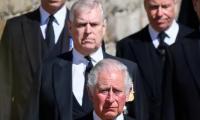Pakistan is obsessed with cars – and big lovely roads for these cars. For decades, the biggest item in the Public Sector Development Programme (PSDP) has been roads.
We have built many highways; most big cities in Pakistan are connected by a highway. Using Google maps, I found that the travel time between cities in Pakistan is almost the same as similar distances in the US. People with cars are very happy and love to talk about how quickly they travel between cities. It is easier now to spend your time in metropolitan centres playing golf, and occasionally visit your farm to collect rent.
The presumed benefit of all this connectivity to GDP growth and welfare continues to elude the economy. Although Pakistan continues to grow between three and five percent – far less than the more than eight percent required by our demographic trends – policymakers seem to think that roads will lead to economic growth.
Within cities – especially the favourites – there is a continuous effort to reduce the travel time for cars. Roads are constantly being widened, and flyovers and underpasses and signal-free corridors are constantly being added, to facilitate fast cars. Once again the rich are happy, but there has been no visible productivity improvement such as increased output, and more commercial and entrepreneurial activity. Inadequate GDP growth reveals that this investment too is not paying off.
I remember senior policymakers were surprised that the poor were driven out of city mobility because of all this flyover-building and road-widening for cars. Horse-drawn carts, bicycles and pedestrians were left with no room. This extensive car infrastructure is anti-poor. Bear in mind that in a city like Lahore, with a population of over 10 million, there are about 300,000 cars.
Now our leaders have woken up to building public transport. Who can disagree with that? We are building huge lines across Lahore, Islamabad, Karachi and Multan; and I suppose more will come.
Roughly speaking, in Lahore we have spent Rs2.5 billion on two lines. Three more are proposed. Extrapolating from the existing costs, these will cost another Rs3 billion. The reason for the high cost is that the Metro had to be elevated to preserve roads for cars. There is also an operating annual subsidy which will grow over time.
So, we are subsidising cars with wide roads and flyovers, and subsidising those that are lucky enough to live by metro buses. We are told that 170,000 people are using the Green Line daily. We can further assume that there may be about 1.5 million people when this metro system is completed.
This whimsical policy will at best cater to less than 15 percent of Lahore’s population by the time it is completed (assuming the trend growth in population). Is there a better alternative? Indeed, there is.
Enrique Penalosa, the mayor of Bogota, came to Pakistan and talked about it. But did anyone listen? Unfortunately, not. Such occasions usually turn into events for protocol and the key people miss the message.
Penalosa famously pointed out that cities need to balance the right to mobility with the right to a city’s public space. Prioritising cars and giving them wide roads while building metros on platforms to provide more space to cars at a cost of $5 billion have many implications. First, cars have most of the space for city mobility. Second, most of the city funding – even that for building the elevated Metro – has been used for preserving the status and speed of cars. Third, all this expenditure for cars means there is little money for other important activities such as healthcare, education and community development.
Penalosa points to mobility as a right for all and for a city to provide some equity in mobility. It is well known that the mobility for the poor is mostly walking and bicycling. Even in our cities, studies show that the poor mainly walk or cycle. Yet our whimsical policies favouring cars have seen to it that there is no space for the poor.
To make it convenient for cars, the Metro is elevated and there is no pedestrian or bicycle access to it. Poor pedestrians must dodge cars and then climb three floors to catch a metro.
What is needed is a change of focus from cars to mobility for all. One car takes the space of about 100 pedestrians when you consider the space that must be kept free in front and back. In that space, 15-20 bicycles can be operated. A bus with around 80-100 passengers takes about the space of three cars.
Why then should cars be subsidised and not priced? Globally most big cities – smaller than Lahore and Karachi – are pricing the use of the car to discourage car travel and encourage other forms of travel. Not only does this meet the Penalosa principle of equity in mobility, it also saves a city’s resources for many other more important uses.
How should cars be priced? First, impose congestion charges for entry into the city centre – the denser and more commercial parts of the city. Second, in dedicated lanes, cars can go fast but at a price. They can even be charged for every mile that they use dedicated fast lanes. There should be meaningful metered parking charges for the use of appropriately-designated parking spaces.
Technology allows such charges to be collected – very cheaply – through mobile phones. Such charges allow car users to rationally consider the use of their cars and planning trips to minimise cost to them.
Charging cars in this manner frees up road space which can then be used to develop paths for pedestrians and cyclists, provide more dedicated bus routes without building elevated tracks and provide space for street commerce with kiosks for entrepreneurship by the poor.
With this little tweak in policy we could have better cities and provide cheaper and more people-friendly metro buses. People would also be provided with more choices of transport such as bicycling. We could also do away with the elevated tracks and flyovers that are seen as ugly and expensive city dividers.
This has the added advantage of saving large sums that are now being spent on roads and the elevated Metro while also giving the city an additional source of revenue (tolls and congestion charges) with which to provide better city services.
The writer is former deputy chairman of the Planning Commission.
Email: nhaque_imf@yahoo.com
Twitter: @nadeemhaque
There is no information if rowdy Pakistanis involved in such incidents were actually dual nationals
This year alone, US Treasury would have to roll-over $10 to $14 trillion in maturing short-term debt
Tear gas no longer marks just protest sites; it paints entire cities as battlegrounds but then again, PTI did it first
Political structures and governance systems have been central to economic and social development
It is confirmed now 40 Pakistanis had died after boat of migrants had capsized in sea near Greece
Many people believe that in future, AI will play an even more significant role in their lives







